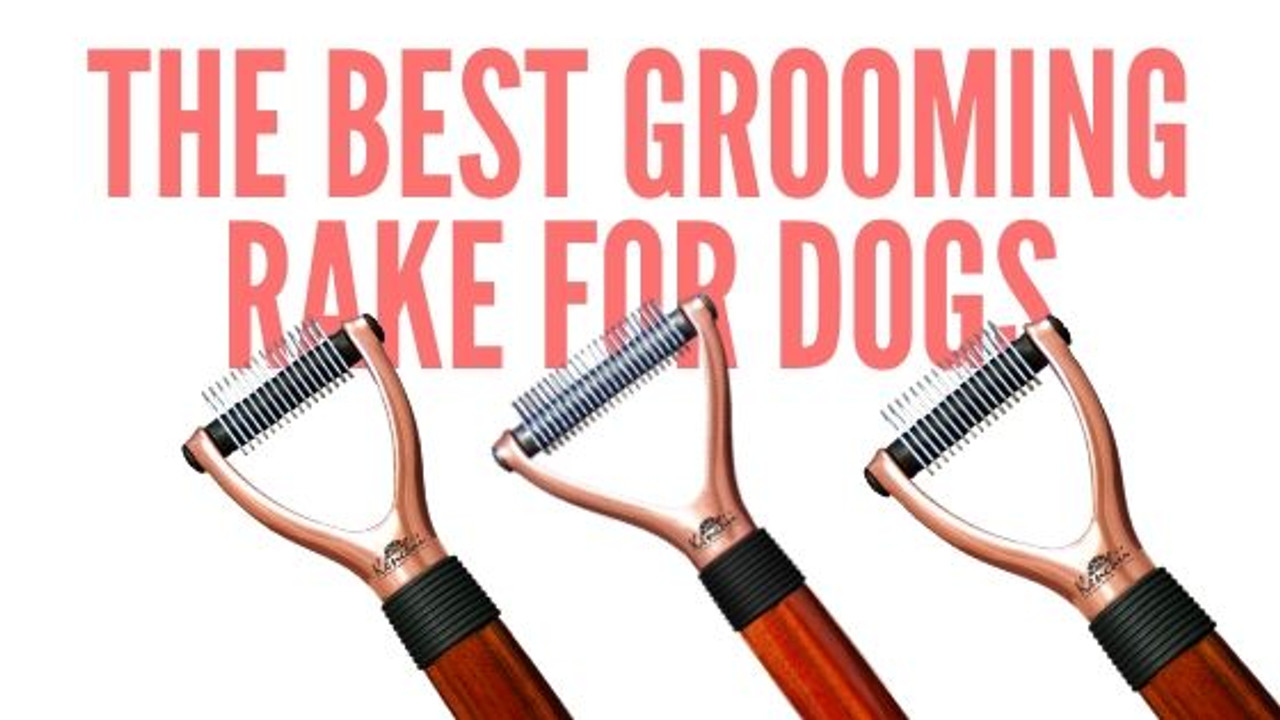The Best Grooming Rake For Dogs
There are two types of dog grooming rakes! One for top fur and one for undercoat. Both remove the bottom layer of thick-furred dogs. It is the method of elimination that varies.
One pulls out the dead coat without cutting the fur. The other has sharp, curved teeth that remove the inner layer but also cut that layer.
One is mainly used in dry layers, both before and after the bath. The other is effective before shampooing, during the bathing process and after the dog is clean and dry.
The difference is not so much in the names. The names are exchanged continuously. To keep them in my mind, I call them different things. It is especially useful when instructing others to use different names.
Kenchii Metal Rakes for shedding fur

Kenchii metal rakes are designed to easily remove the dead coat and the shedding fur. They are generally T-shaped with rounded pins on the head of the T.
Kenchii metal rakes have a different design compared to other rakes.
Cheaper grooming rakes
In some heads, the upper bar is long, up to 6 inches in diameter. In other designs, the head can only be a couple of inches wide. The length and shape of the teeth will also vary. In some rakes (see Figure 2), the teeth are short and almost conical in shape. With others, the teeth are long, they sink deeply into long and heavy layers.
In almost all models, the handle protrudes directly from the crosshead with all the teeth.
Why Kenchii grooming rakes
Our rakes are design to do all of the above, but the blades do touch your pets skin. It is a one of a kind rake, with your pets health in mind.
Our rakes are designed to remove dead fur without damaging the healthy fur. Work the tool in the natural direction of fur growth. Care must be taken not to sink the comb too far into a dense layer repeatedly with too much pressure.
I will throw too often a thick or tangled tablecloth will be inconvenient for the dog and difficult for the groomer. Digging with this rake does not damage the skin.
If used correctly, rakes can be very efficient in removing the dead layer or the "fluff" of rustic coated spokes. They are mainly used in double-layered, thick-furred or rustic-style dogs.
The best Rake for undercoats

Rakes for undercoats have many small, sharp and curved blades that come together to remove the undercoat layer. They are available in a variety of tooth widths, which makes this tool suitable for a wide range of breeds. In the shedding of rays, they can remove the dead and blurred inner layer in a few minutes, leaving the top layer bright and healthy.
In hard-furred dogs, they mimic the stripped appearance by hand quickly and easily.
The bottom layer rakes can be used in a wet or dry layer.
Pull the rake in the direction of fur growth.
Always start with a wider toothed rake to get started. Work towards tighter teeth while the tool slides easily, removing the mantle less and less. Rakes for undercoat usually work best when used before bathing or in the bathtub with a wet layer.
Be careful when working with this tool. In some types of hair, especially dogs with thick coat, they will cut the fur while removing the inner layer.
While the blades are curved, it is still necessary to pay attention to the amount of pressure exerted on the instrument while dragging it through the mantle so as not to damage the skin.
Be careful when working around areas where the skin is thin, such as in the area of the hock, the joints of the ears, the hip and the armpits.
Rakes for undercoat work well on many types of layers, including double-layer spokes, heavy layers and rustic layer types. They work exceptionally well in any breed that is stripped by hand like many of the Sporting or Terrier breeds.
Just be sure to monitor your progress while this tool works on the dog.
Here is a good trick that I have seen using with rakes for undercoats.
This trick minimizes the cutting of the layer while removing the dead layer, particularly when the layer is clean and dry.
Simply take a thick rubber band and wrap it around the blade hooks. The rubber protects the layer from excessive cutting while the rubber helps support the dead layer, using it to remove it almost effortlessly.
 FREE SHIPPING on orders over $350! (Domestic ONLY)
FREE SHIPPING on orders over $350! (Domestic ONLY) 
